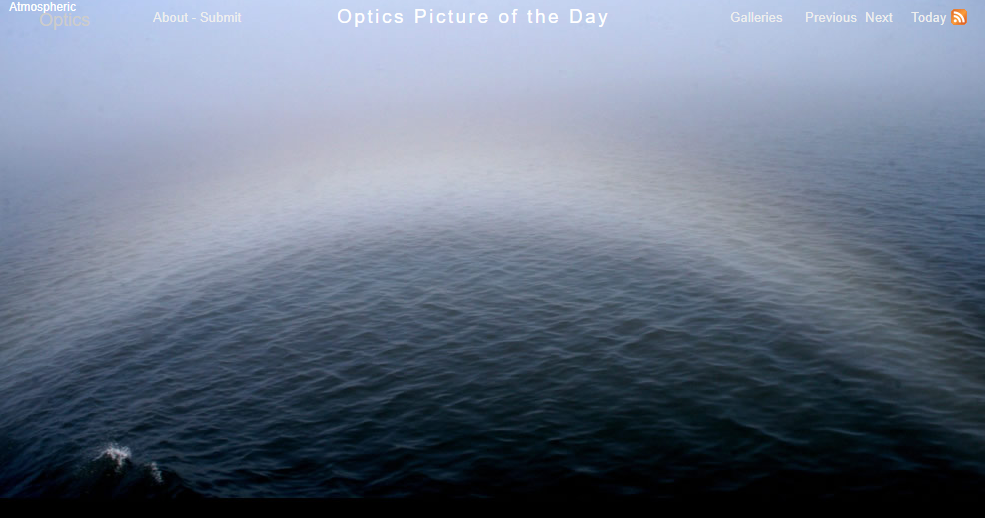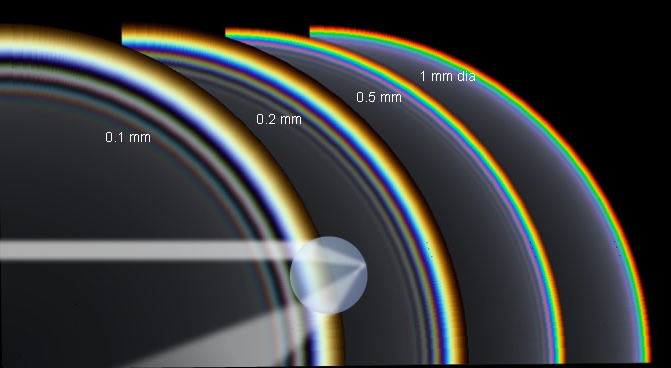Fundy Fogbow
Fundy Fogbow: A Spectacular Atmospheric Phenomenon
Fogbows are a captivating atmospheric optics phenomenon that occurs when light interacts with tiny water droplets suspended in the air. One specific type of fogbow, known as the Fundy Fogbow, has gained popularity due to its unique characteristics and breathtaking appearance. In this article, we will explore the Fundy Fogbow in detail, shedding light on its formation, distinguishing features, and the factors that contribute to its mesmerizing display.
Formation of the Fundy Fogbow
The Fundy Fogbow, as the name suggests, is commonly observed in the vicinity of the Bay of Fundy, located on the east coast of North America. This region is known for its dense fog, which provides the ideal conditions for the formation of fogbows. Similar to rainbows, fogbows are created through a process involving refraction, reflection, and dispersion of light.
When sunlight passes through the tiny water droplets present in fog, the light is refracted as it enters the droplet. The light then undergoes internal reflection within the droplet before being refracted again as it exits. This bending of light causes the different colors of the spectrum to spread out, resulting in a circular band of colors.
The Role of Droplet Size
The size of the water droplets plays a crucial role in determining the appearance of a fogbow. Larger droplets produce broader and more vividly colored fogbows, while smaller droplets create narrower and fainter ones. The reason behind this lies in the interaction between light waves and the size of the droplets.
As droplets become smaller and approach the scale of light waves, diffraction and interference effects become increasingly significant. These phenomena cause the light waves to deviate from their geometric paths, resulting in a wider fogbow. Additionally, wave diffraction produces supernumerary fringes, which are fainter bands of colors that can be observed alongside the main fogbow.
The Influence of Environmental Factors
While droplet size is a primary factor influencing fogbow appearance, environmental conditions also play a role in shaping the characteristics of the Fundy Fogbow. The proximity of the fog to the cold sea surface in the Bay of Fundy contributes to the formation of a thin layer of mist droplets. These droplets, being closer to the size of light waves, enhance the diffraction and interference effects, leading to a more pronounced fogbow.
Furthermore, the presence of supernumerary fringes is dependent on the uniformity of droplet size. If the droplets are relatively similar in size and the sun's disk does not blur their appearance, these fringes become visible. However, due to variations in droplet size and the sun's disk blurring effect, supernumerary fringes are not always observed in fogbows.
Capturing the Fundy Fogbow
The beauty of the Fundy Fogbow has captivated many photographers and enthusiasts who strive to capture its ethereal essence. Photographing a fogbow requires specific conditions and techniques to truly showcase its magnificence. To capture the vibrant colors and delicate details of a fogbow, photographers often employ techniques such as using a polarizing filter or adjusting exposure settings to enhance contrast.
Additionally, the angle at which sunlight interacts with the water droplets determines the visibility of a fogbow. The optimal viewing conditions for a Fundy Fogbow occur when the sun is at a low angle in the sky, typically during sunrise or sunset. This angle maximizes the refraction and reflection of light within the droplets, resulting in a more pronounced and vivid fogbow.
The Enchanting Appeal of the Fundy Fogbow
The Fundy Fogbow stands out among other atmospheric phenomena due to its unique characteristics and captivating allure. Its soft pastel hues and circular shape evoke a sense of wonder and awe, providing a visual spectacle for those fortunate enough to witness it. Whether observed from the shores of the Bay of Fundy or during a ferry crossing, the Fundy Fogbow leaves a lasting impression on all who encounter its enchanting display.
In conclusion, the Fundy Fogbow is a remarkable atmospheric optics phenomenon that showcases the intricate interplay between light and water droplets. Its formation, appearance, and visibility are influenced by factors such as droplet size, environmental conditions, and the angle of sunlight. Photographing a Fundy Fogbow requires skill and careful consideration of lighting and exposure settings. This ethereal natural wonder continues to mesmerize and inspire, reminding us of the beauty that can be found in the most unexpected places.

Bay of Fundy Fogbow - Imaged during a ferry crossing by Alan Clarke of the University of Calgary. ©Alan Clarke, shown with permission.

The small mist droplets producing the fogbow were in a thin layer close to the cold sea surface.
Whether we see a broad pastel hued fogbow or a narrow and bright coloured rainbow depends entirely on the size of the water drops making it. The ray path is the same, refraction on entering, internal reflection and more refraction and colour dispersion on leaving.
But light waves do not follow precise geometric paths. Their diffraction and interference becomes ever more significant as the drop shrinks and approaches the length scale of the light waves.
The Airy theory simulations show the increasing width of bows as drops get smaller and the growing evidence of wave diffraction effects. In fact, diffraction and supernumerary fringes are produced by even the largest raindrops and we would easily see them if the sun's disk did not blur them and the drops were reasonably same sized..
Note: this article has been automatically converted from the old site and may not appear as intended. You can find the original article here.
Reference Atmospheric Optics
If you use any of the definitions, information, or data presented on Atmospheric Optics, please copy the link or reference below to properly credit us as the reference source. Thank you!
-
<a href="https://atoptics.co.uk/blog/fundy-fogbow/">Fundy Fogbow</a>
-
"Fundy Fogbow". Atmospheric Optics. Accessed on November 26, 2024. https://atoptics.co.uk/blog/fundy-fogbow/.
-
"Fundy Fogbow". Atmospheric Optics, https://atoptics.co.uk/blog/fundy-fogbow/. Accessed 26 November, 2024
-
Fundy Fogbow. Atmospheric Optics. Retrieved from https://atoptics.co.uk/blog/fundy-fogbow/.